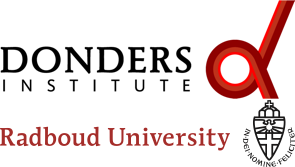Cortical networks are not static, but change constantly in response to experience. In particular, in response to strong interventions, networks re-organise themselves so that the neurons representing sensory stimuli that are no longer available get ’taken over’ by neighbouring areas. Whisker deprivation experiments, in which rodent whiskers are plucked or trimmed, show that the part of the rodent brain that processes information from the whiskers (‘barrel cortex’) is extensively reorganised as a result of the sensory deprivation of the parts of barrel cortex that normally respond to the plucked or trimmed whiskers[3]. The exact changes in network connectivity are now being unraveled, but it is likely that different connectivity patterns could explain the same experimental results[4]. Moreover, because the underlying network changes are not known, it remains unclear whether these changes improve the information processing: are the representations of the sensory stimuli in the new situation more accurate and/or more efficient? In this project, the ESR will simulate the whisker deprivation experiments, using a biophysical model of barrel cortex, which are both already available (see ESR1). ESR2 will investigate what connectivity changes, both within and between columns (representing single whiskers), can explain the experimental findings. We will cooperate with Dr. Rena Bakhshi from NLeSC for model validation techniques. Next, the ESR will analyze which of these connectivity patterns show increases, decreases or no change in the mutual information between input and neural activity.
[3]Fox (1992) J Neurosci,12(5):1826-38; Allen et al (2003) Nat Neurosci 6(3), 291–9; Clem et al (2008) Science, 319(5859), 101–4.
[4]Prinz, A et al. (2004). Nat Neurosci, 7(12), 1345–1352
Expected Results:
1. Implementation of the model with different connectivity patterns.
2. Determine connectivity patterns that correspond to the observed experimental results.
3. Determine connectivity patterns that show an increase in information processing capabilities of the network.
Planned secondment(s):
1. UGent, Joni Dambre, M19-21: use quantitative measures of graph topology to analyse and visualize the simulated networks and implement the results in a virtual mouse (Available through Human Brain Project, Neurorobotics Platform)
2. NLeSC, Rena Bakhshi, M29-31: validate the developed network analysis and modelling tools and develop tools to compare models
3. You will also be asked to play an active role in the organisation of the yearly events of the Nederlandse Hersenolympiade.
Enrolment in Doctoral degree(s): You will be enrolled in the Donders Graduate School, Radboud University

